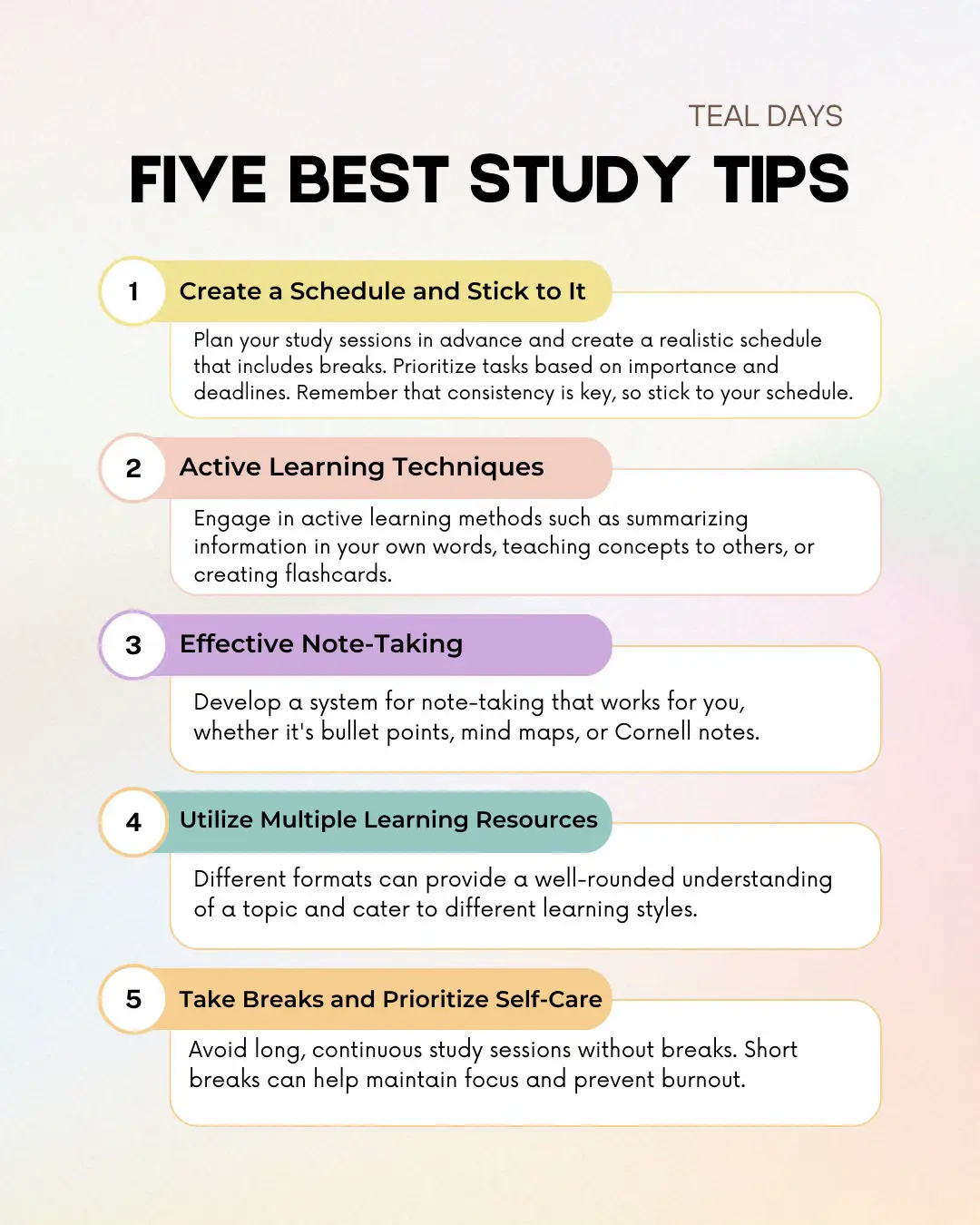Pulse of Information
Stay updated with the latest news and insights.
Study Smarter, Not Harder: Tricks That Actually Work
Unlock the secrets to studying smarter! Discover proven tricks that boost your learning and save you time. Dive in now!
10 Study Techniques That Will Change Your Grades
If you're looking to boost your academic performance, employing effective study techniques can make all the difference. Consistent practice and a well-structured study routine are key elements that can transform your grades. Here are ten innovative study techniques to incorporate into your learning:
- Active Recall: Test yourself on the material instead of just re-reading it.
- Spaced Repetition: Review content at increasing intervals to enhance retention.
- Pomodoro Technique: Work for 25 minutes, then take a short break to maintain focus.
- Mind Mapping: Visualize information and its relationships to enhance understanding.
- Summarization: Write summaries of what you’ve learned in your own words.
Additionally, creating a conducive study environment helps improve concentration. Minimize distractions by finding a quiet place to study, and use tools like apps to block social media during study sessions. Other techniques include:
- Collaborative Study: Share knowledge with peers to gain different perspectives.
- Teaching Others: Explaining concepts to someone else reinforces your understanding.
- Chunking: Break down information into smaller, manageable parts.
- Utilizing Multimedia: Use videos, podcasts, and infographics to diversify your learning.

The Science Behind Effective Learning: How to Study Smarter
The science behind effective learning involves understanding how our brains process and retain information. Recent studies highlight the importance of active engagement in the learning process. Instead of passively reading or listening, students who interact with the material—through discussions, teaching others, or applying concepts in practical scenarios—tend to grasp and remember the information more effectively. Techniques such as spaced repetition and self-testing encourage retrieval practice, enabling learners to strengthen their memory pathways and enhance information retention over time.
Moreover, various cognitive strategies can be employed to study smarter. For instance, utilizing the Pomodoro Technique—which involves studying for 25 minutes followed by a 5-minute break—can boost concentration and prevent burnout. Additionally, organizing information through mind mapping or outlining can help learners visualize connections and structure, making it easier to recall details during exams. By incorporating these methods, students not only enhance their knowledge retention but also develop a more effective study routine.
Are You Making These Common Study Mistakes?
Studying effectively is crucial for academic success, yet many students fall into common study mistakes that hinder their progress. One of the most prevalent errors is cramming information right before exams instead of adopting a consistent study schedule. This approach can lead to increased stress and decreased retention of material. Instead, consider breaking your study sessions into manageable chunks. For example, use the Pomodoro Technique by studying for 25 minutes, followed by a 5-minute break, to enhance focus and productivity.
Another common mistake is studying in a distracting environment. Whether it's the noise from a television or the allure of social media, these distractions can significantly impact your ability to absorb information. To combat this, create a dedicated study space that is free from interruptions. Implementing techniques such as turning off notifications and using apps that block distracting websites can further improve your concentration. By addressing these common study mistakes, you set yourself up for a more effective learning experience.